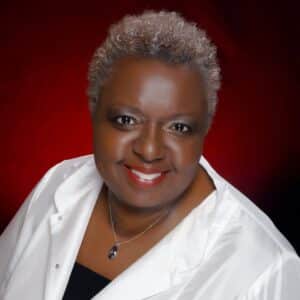Overview of Head Start
Head Start is a federally funded program founded in 1965 with the mission of promoting the school readiness of young children from low-income families by enhancing their cognitive, social, and emotional development. This blog focuses primarily on Head Start programs, which provide preschool services and support to children ages three through five and their families, rather than Early Head Start, which supports pregnant people and families with children under age three. However, the challenges outlined here are applicable to Early Head Start as well. The focus on Head Start here is because that is where the majority of resources are currently dedicated.
Head Start programs are free for families who are eligible, which include:
- Families who are at or below 100 percent of the Federal Poverty Level (FPL)
- Families receiving public assistance such as Temporary Assistance for Needy Families (TANF), Supplemental Security Income (SSI), or Supplemental Nutrition Assistance Program (SNAP)
- Families experiencing homelessness
- Children in foster care
- Children with disabilities
With the child at the center of their approach, Head Start programs provide services in three key areas: early learning and development, family engagement and wellbeing, and health and wellness. There are also Head Start programs that provide services tailored to specific populations. American Indian and Alaska Native (AIAN) Head Start programs serve children of AIAN heritage and offer traditional language and cultural practices that honor their rich heritage. Migrant and Seasonal Head Start programs provide services to families who are in agricultural labor and have changed their residence within two years or who are engaged in seasonal agricultural labor.
Head Start operates using a federal-to-local funding model. Head Start grantees include local school districts, nonprofit and for-profit groups, faith-based organizations, and tribal councils. Thus, Head Start can be provided in a variety of settings, including child care and development centers, schools, and family child care homes (Office of Head Start, 2022).
Access to Head Start
Close to one million children access Head Start and Early Head Start each year, yet many families cannot access the program due to a range of systemic and programmatic barriers. In 2021, the National Head Start Association conducted a survey, focus groups and key informant interviews that identified key issues that make participating in the program difficult for families – access to transportation, outdated locations, the instability of poverty, low income eligibility limits, inadequate hours of service for families, the workforce crisis, lack of awareness of the program’s comprehensive services, and a possible bias for school-based services.
Perhaps the greatest systemic barrier to accessing Head Start is the income eligibility limits. Income eligibility is based on the federal poverty guidelines. The United States’ method for determining the poverty level is incredibly outdated. The calculation does not consider housing, transportation, child care, or medical costs. Geographical differences are also not considered, even though costs of living vary significantly across the country. Another systemic barrier is transportation, with low income families disproportionately having limited or no access to personal or public transportation.
Head Start programs are required to conduct annual family and five-year community assessments to determine whether slots are distributed in the most appropriate locations, whether the hours of service are meeting families’ needs, and a variety of other topics. These assessments are then used by the program staff and the Policy Council to determine how best to implement the program. However, making significant changes such as changing the location of a center or increasing the hours of service can be costly, require a great deal of time, and be difficult to implement.
Conclusion
Head Start has a deep history providing two generational programming for very low income families. The standards have been reviewed and revised over the 60 years of implementation, based on research as well as parent, community, and grantee feedback. The power of Head Start is not only in its comprehensiveness but also in the inclusion of family leaders in governance and implementation of the program. In addition to being a child development program, Head Start is also an economic empowerment program, providing training and jobs for parents.
The funding per child for Head Start grantees, though significantly more than the average per child reimbursement for state pre-k, is directly related to the depth of the standards. It is important to note that as a national program, many of the regulations, funding and eligibility principles are averaged across all the states and territories. This can create significant implementation challenges for states and communities with high costs of living particularly regarding staff compensation, facilities, and enrolling income-eligible families. These challenges can lead to under enrollment and missed opportunities for collaboration in mixed delivery pre-k, leaving many families without the opportunity and supports needed as they strive to provide their children with a foundation for future social and academic success.
Federal policy solutions to these problems included allowing grantees to convert Head Start slots to Early Head Start slots with supports for the cost increases and allowing for automatic eligibility for families that already quality for SNAP and housing assistance. States can consider providing funding for Head Start and Early Head Start programming with higher income eligibility requirements that are more fitting for their state and community context.

 In July 2023, Pamela Williams joined a global panel discussion at the
In July 2023, Pamela Williams joined a global panel discussion at the 


